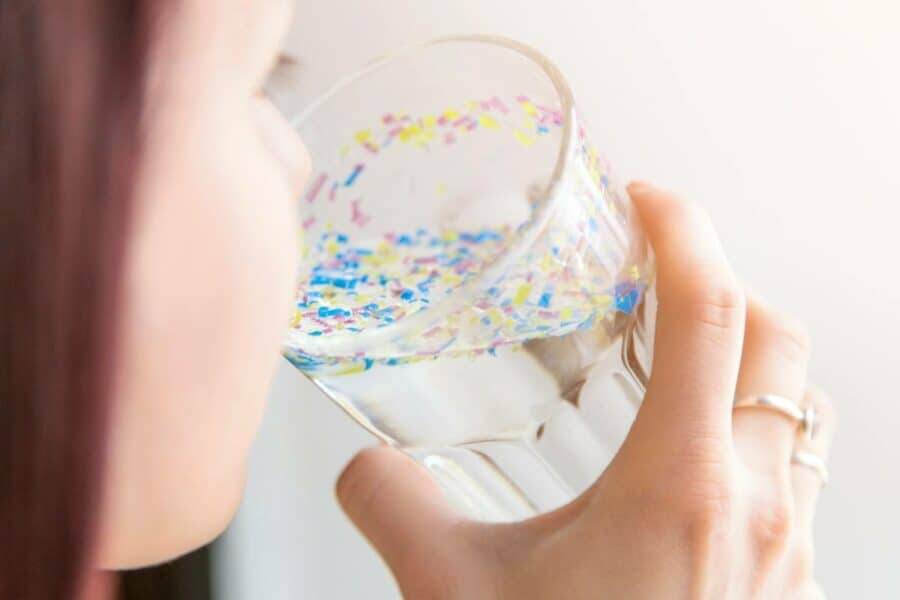Microplastics are tiny plastic particles that can make their way into people’s drinking water and other water sources. Too small to see with the naked eye, these particles usually measure between 5 to 500 micrometers (0.0002 – 0.00625 inches) wide and make up about 90% of the total number of plastic particles in seawater. They are commonly found in our environment, but scientists have recently discovered that they are also present in drinking water. Microplastics can result from the breakdown of larger plastic pieces or from washing synthetic textiles. Microplastics’ physical shape and chemical nature make them difficult to filter out during water treatment. These minuscule particles may affect human health via ingestion or exposure to contaminated dust from air pollution.
1. Surface run-off
The most common sources of microplastics in our environment are on roadsides, beaches, and sewage-contaminated coastlines. Microplastics can often be found on road surfaces and in clumps of seaweed, or algae washed ashore. The source of microplastics is most likely microorganisms in the soil or seawater. This is because microplastics enter the body through ingestion (e.g., via food products or skin contact if the person is walking barefoot on the surface). When plastic bags break, they release microscopic particles into food supply lines, rivers, and oceans, leading to the contamination of seafood products that people consume.
2. Combined sewer overflows
In many areas worldwide, combined sewer overflows (CSOs) cause most or all raw sewage problems. CSOs are artificial connections between two sewers that result in raw sewage being mixed and discharged as a combined sewer overflow into a wetland or coastal waters. Microplastics can be found in the discharged CSO water, flushed through pipes to other houses and streets.
3. Urban development
Most microplastics are formed when larger pieces of plastic (e.g. shopping bags, water bottles) or synthetic materials (e.g. T-shirts and plastic toothbrushes) break into smaller pieces (polymer particles). These smaller pieces then make their way into the surrounding soil or water following human activities such as washing clothes, gardening, or walking barefoot on the surface of roads.
4. Air pollution
Air pollution is the collection of aerosol matter in the atmosphere, including particulate matter and gases. Particulate matter is made up of solid and liquid materials. In contrast, gaseous material includes discrete gas molecules that have been condensed into small particles with a diameter of less than 2.5 mm, such as nitrogen oxides (NO), carbon dioxide (CO), ozone (O3), and methane (CH4). The composition of particulate matter can change over time as pollutants are formed or expelled into the air by human activity or nature.
5. Degraded plastic waste and atmospheric deposition
Plastics are generally persistent in the environment and resistant to degradation in the marine environment. Some microplastic particles have been found to persist in seawater, freshwaters, and soils. Animal studies have shown that microplastics may be ingested by marine fauna such as oysters, mussels, sea saltwater fish (such as cod), and sea birds. The ingestion of plastic particles by humans has yet to be fully understood, and there is currently very little data available.
Water Filtration in Austin
In conclusion, microplastics in drinking water is a growing concern, and we must take action to ensure the safety of our water sources. Here at Aqua Chill of Austin we offer effective and reliable solutions with their advanced systems in water filtration in Austin. Protect your health and the environment by opting for clean drinking water with their services. Contact Aqua Chill of Austin today to learn more about our Austin office water filtration services and how they can help you maintain a healthier lifestyle. Let’s work together to eliminate microplastics from our daily routine and make a positive impact on our planet.




